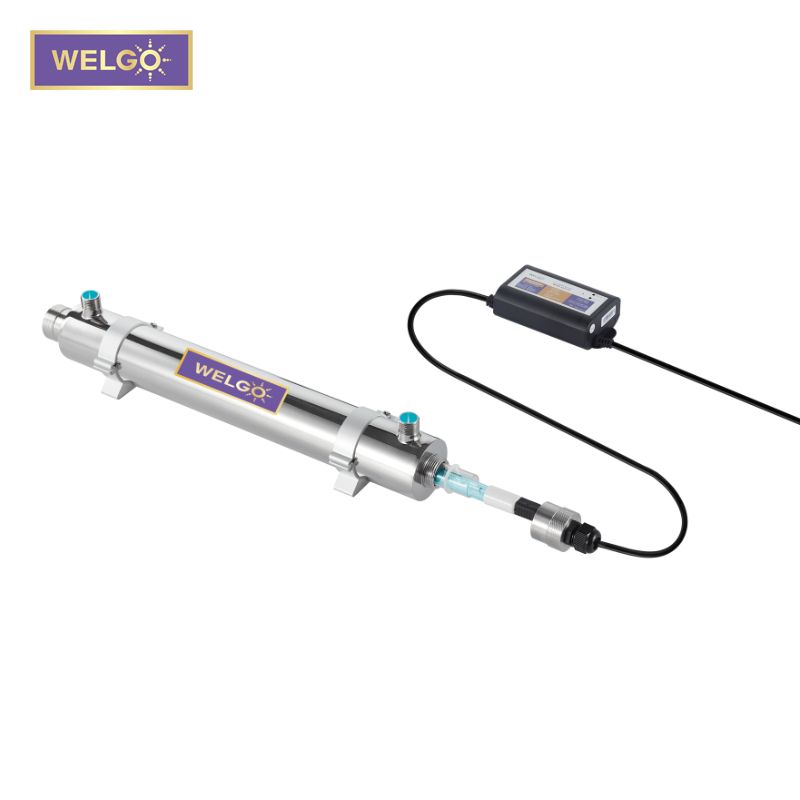How Does a Residential UV Water Sterilizer Work?
Residential UV water sterilizers have become a cornerstone of modern water purification systems. They offer an effective, chemical-free method for disinfecting water, ensuring that households have access to safe and clean drinking water. Understanding the mechanisms behind these devices, their benefits, and operational considerations is essential for homeowners seeking reliable water treatment solutions.
What is a Residential UV Water Sterilizer?
A residential UV water sterilizer is a device designed to eliminate microorganisms such as bacteria, viruses, and protozoa from household water supplies. Unlike traditional chemical disinfectants, UV sterilizers rely on ultraviolet light, specifically UV-C light with a wavelength of 254 nanometers, to inactivate harmful pathogens. This process does not alter the taste, odor, or chemical composition of the water, making it ideal for residential use.
Core Components of a UV Water Sterilizer
Every residential UV sterilizer is built around several key components:
UV Lamp – The primary source of ultraviolet light, usually enclosed in a quartz sleeve to prevent water from directly contacting the lamp while allowing maximum UV transmission.
Quartz Sleeve – Protects the UV lamp from water and scale deposits while ensuring efficient light penetration.
Reactor Chamber – The cylindrical or tubular section where water flows and is exposed to UV light. The chamber is often made of stainless steel to prevent corrosion and maintain UV reflectivity, enhancing the disinfection process.
Control Unit – Monitors the UV intensity, lamp life, and system functionality. Many advanced models feature digital displays for real-time monitoring and automatic shutdown in case of malfunction.
These components work synergistically to ensure that water passing through the sterilizer is effectively disinfected before reaching household taps.
How UV Light Inactivates Microorganisms
The disinfection process in a UV water sterilizer relies on photonic energy. When water passes through the sterilizer:
UV-C photons penetrate the cells of microorganisms.
These photons damage the DNA and RNA, specifically forming thymine dimers that disrupt the genetic material.
Once the nucleic acids are damaged, the microorganisms are unable to reproduce and effectively die off.
Unlike chemical disinfectants, UV light does not rely on oxidation or chemical reactions, making it eco-friendly and safe for continuous use.
Flow Rate and Exposure Time
For UV sterilization to be effective, water must receive adequate exposure to UV light. This is influenced by two critical factors:
Flow Rate – Faster water flow reduces the exposure time to UV light, potentially allowing some microorganisms to survive. Residential systems are designed to maintain optimal flow rates to ensure complete disinfection.
UV Dose – Measured in millijoules per square centimeter (mJ/cm²), the UV dose must meet or exceed the required level for pathogen inactivation. The dose depends on lamp intensity, exposure time, and water clarity.
Properly sized UV sterilizers for residential use balance flow rate and UV dose to ensure safe, pathogen-free water.
Water Quality Considerations
The effectiveness of a UV sterilizer can be influenced by water quality. Turbidity, color, and total dissolved solids (TDS) can reduce UV penetration. Key considerations include:
Pre-filtration – Removing sediment, chlorine, and heavy metals can enhance UV efficiency.
Turbidity Limits – Water with high turbidity scatters UV light, reducing disinfection effectiveness. Many residential systems recommend water turbidity below 1 NTU.
UV Transmittance (UVT) – A measurement of how much UV light can pass through water. Water with UVT above 85% ensures optimal sterilization.
Regular water testing is recommended to maintain system performance and ensure continuous disinfection.
Maintenance Requirements
Maintaining a UV water sterilizer is essential for long-term efficiency. Key maintenance tasks include:
Additional resources:Should You Use Compact UV Water Sterilizer in Your Pool?
Lamp Replacement – UV lamps typically have a lifespan of 9,000 to 12,000 hours. Even if the lamp still emits visible light, its UV intensity may decline, reducing disinfection capability.
Quartz Sleeve Cleaning – Scale and mineral deposits can block UV penetration. Cleaning every 6–12 months ensures maximum light transmission.
System Inspection – Monitoring alarms and UV intensity readings help detect issues early and prevent waterborne pathogen exposure.
Routine maintenance ensures that the residential UV water sterilizer operates at peak performance.
Advantages of Using a UV Water Sterilizer in Homes
UV water sterilizers offer numerous benefits compared to chemical disinfection or filtration methods:
Chemical-Free Disinfection – No chlorine or harmful by-products are introduced into the water.
Broad-Spectrum Effectiveness – Inactivates bacteria, viruses, and protozoa resistant to chemical disinfectants.
Minimal Water Waste – Unlike reverse osmosis systems, UV sterilizers do not require water disposal.
Low Operating Cost – UV lamps consume minimal electricity and require infrequent replacement.
Retains Natural Water Quality – UV treatment preserves taste, odor, and minerals.
These advantages make UV sterilizers an ideal solution for households seeking safe, sustainable water treatment.
Installation and System Integration
Residential UV water sterilizers are typically installed after sediment filters and before the point of use. Correct installation ensures:
Maximum UV exposure by maintaining laminar flow within the chamber.
Protection of plumbing fixtures and appliances from biofilm and microbial contamination.
Integration with smart home monitoring systems for real-time alerts and remote control.
Professional installation is recommended to guarantee optimal performance and compliance with local plumbing codes.
Common Myths About UV Water Sterilizers
Despite their effectiveness, several myths persist:
“UV kills all contaminants” – UV sterilizers only inactivate microorganisms. They do not remove chemical contaminants, heavy metals, or sediment.
“Once installed, maintenance is unnecessary” – Regular lamp replacement and cleaning are critical.
“UV water treatment changes the water taste” – Properly maintained systems preserve natural taste.
Understanding the limits and capabilities ensures realistic expectations and proper system use.
Conclusion
Residential UV water sterilizers provide a highly effective, eco-friendly solution for disinfecting household water. By utilizing UV-C light to inactivate harmful microorganisms, these systems ensure safe drinking water without chemicals, maintaining natural taste and mineral content. Proper installation, monitoring, and maintenance are key to maximizing the system’s lifespan and performance.
For households prioritizing health, sustainability, and reliability, a UV water sterilizer is a vital investment in water safety.





